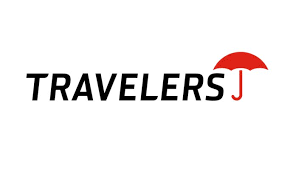Your health matters to us.
We all need it.
Life moves fast and a suitable health insurance plan is vital in this day and age. Whether you're an individual, family, or a business looking to protect your employees. We will work with you to design a plan that works best for you and suits your health insurance needs.







Individual & Families
Individual health insurance is for anyone who doesn’t have access to employer-sponsored or government-run health coverage. This includes people who are employed by a small business that doesn’t provide health benefits, people who are self-employed, and people who retire before they’re eligible for Medicare and have to get their own personal health coverage until they reach age 65.
Groups
To qualify for a group health insurance plan, your company typically needs at least two employees including the owner. In other words, a small business owner who employs just one other full-time employee typically meets the employee limit under the small business definition, and might be able to get a group plan.
Small Business
Up to 50 Employees
Midsize Business
51 to 250 Employees
Large Business
251 to 3,000+ Employees
Types Of Plan's
HMO
Health Maintenance Organization
An HMO delivers all health services through a network of healthcare providers and facilities. With an HMO, you may have:
- The least freedom to choose your health care providers
- The least amount of paperwork compared to other plans
- A primary care doctor to manage your care and refer you to specialists when you need one so the care is covered by the health plan; most HMOs will require a referral before you can see a specialist.
- Premium: This is the cost you pay each month for insurance.
- Deductible: Your plan may require you to pay the amount before it covers care except for preventive care.
- Copays and/or co-insurance for each type of care. A copay is a flat fee, such as $15, that you pay when you get care. Coinsurance is when you pay a percent of the charges for care, for example 20%. These charges vary according to your plan and they are counted toward your deductible.
PPO
Preferred Provider Organization
With a PPO, you may have:
- A moderate amount of freedom to choose your health care providers — more than an HMO; you do not have to get a referral from a primary care doctor to see a specialist.
- Higher out-of-pocket costs if you see out-of-network doctors vs. in-network providers
- More paperwork than with other plans if you see out-of-network providers
- Premium: This is the cost you pay each month for insurance.
- Deductible: Some PPOs may have a deductible. You will likely have to pay a higher deductible if you see an out-of-network doctor.
- Copay or coinsurance: A copay is a flat fee, such as $15, that you pay when you get care. Coinsurance is when you pay a percent of the charges for care, for example 20%.
- Other costs: If your out-of-network doctor charges more than others in the area do, you may have to pay the balance after your insurance pays its share.
EPO
Exclusive Provider Organization
With an EPO, you may have: A moderate amount of freedom to choose your health care providers — more than an HMO; you do not have to get a referral from a primary care doctor to see a specialist. No coverage for out-of-network providers; if you see a provider that is not in your plan’s network – other than in an emergency – you will have to pay the full cost yourself. Lower premium than a PPO offered by the same insurer.
- Premium: This is the cost you pay each month for insurance.
- Deductible: Some EPOs may have a deductible.
- Copay or coinsurance: A copay is a flat fee, such as $15, that you pay when you get care. Coinsurance is when you pay a percent of the charges for care, for example 20%.
- Other costs: If you see an out-of-network provider you will have to pay the full bill.
POS
Point of Service Plan
A POS plan blends features of an HMO with a PPO. With POS plan, you may have:
- More freedom to choose your health care providers than you would in an HMO
- A moderate amount of paperwork if you see out-of-network providers
- A primary care doctor who coordinates your care and who refers you to specialists
- Premium: This is the cost you pay each month for insurance.
- Deductible: Your plan may require you to pay the amount of a deductible before it covers care beyond preventive services.You may pay a higher deductible if you see an out-of-network provider.
- Copays or coinsurance: You will pay either a copay, such as $15, when you get care or coinsurance, which is a percent of the charges for care. Copayments and coinsurance are higher when you use an out-of-network doctor.
HDHP
High Deductible Health Plan
With a high-deductible health plan (HDHP). With an HDHP, you may have:
- One of these types of health plans: HMO, PPO, EPO, or POS
- Higher out-of-pocket costs than many types of plans; like other plans, if you reach the maximum out-of-pocket amount, the plan pays 100% of your care.
- A health savings account (HSA) to help pay for your care; the money you put in an HSA is not taxed and can be used tax-free on eligible medical expenses. In order to have a HSA, you must be enrolled in a HDHP.
- Premium: An HDHP generally has a lower premium compared to other plans.
- Deductible: The deductible is at least $1,400 for an individual or $2,800 for a family, but not more than $6,900 for an individual and $13,800 for a family in 2020. Like with all plans, your preventive care is free even if you haven’t met the deductible.
- Copays or coinsurance: Other than preventive care, you must pay all your costs up to your deductible when you go for medical care. You can use money in your HSA to pay these costs.
HSA
Health Savings Account
- A health savings account (HSA) to help pay for your care; the money you put in an HSA is not taxed and can be used tax-free on eligible medical expenses. In order to have a HSA, you must be enrolled in a HDHP.
